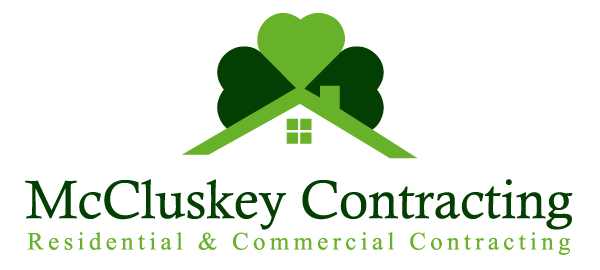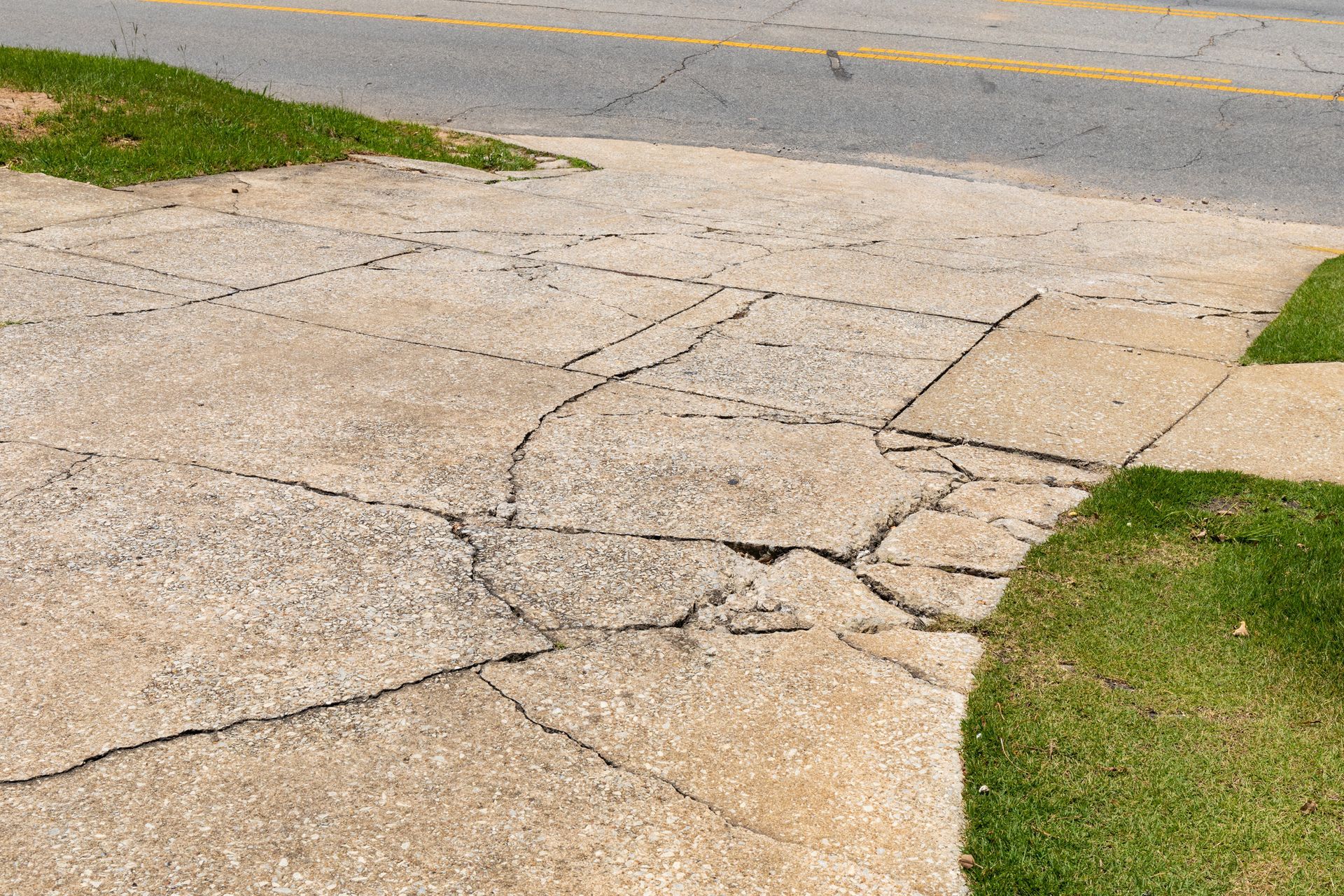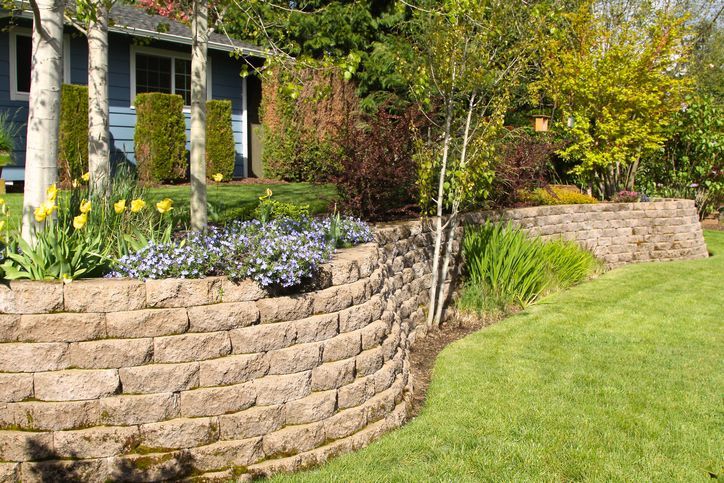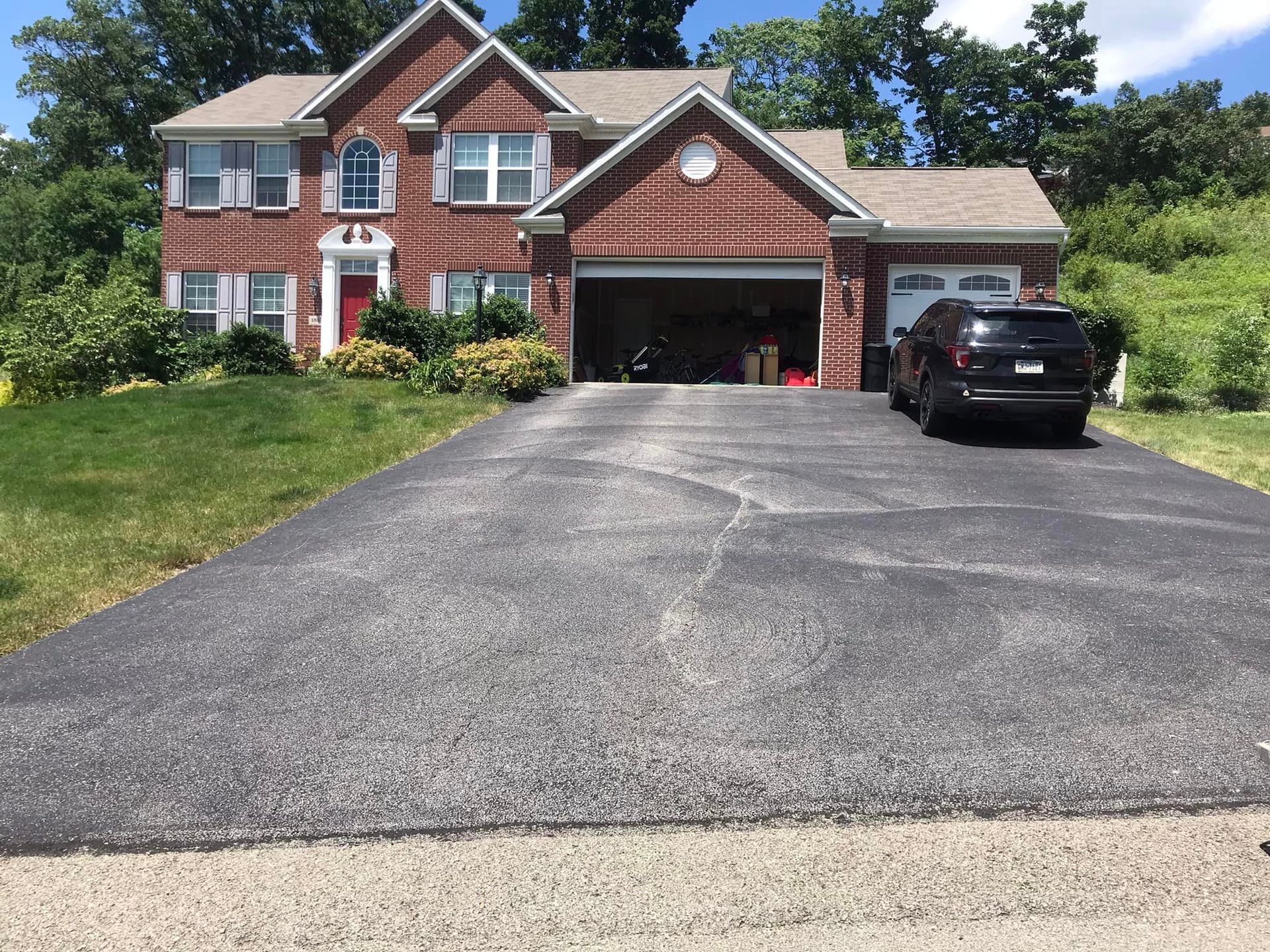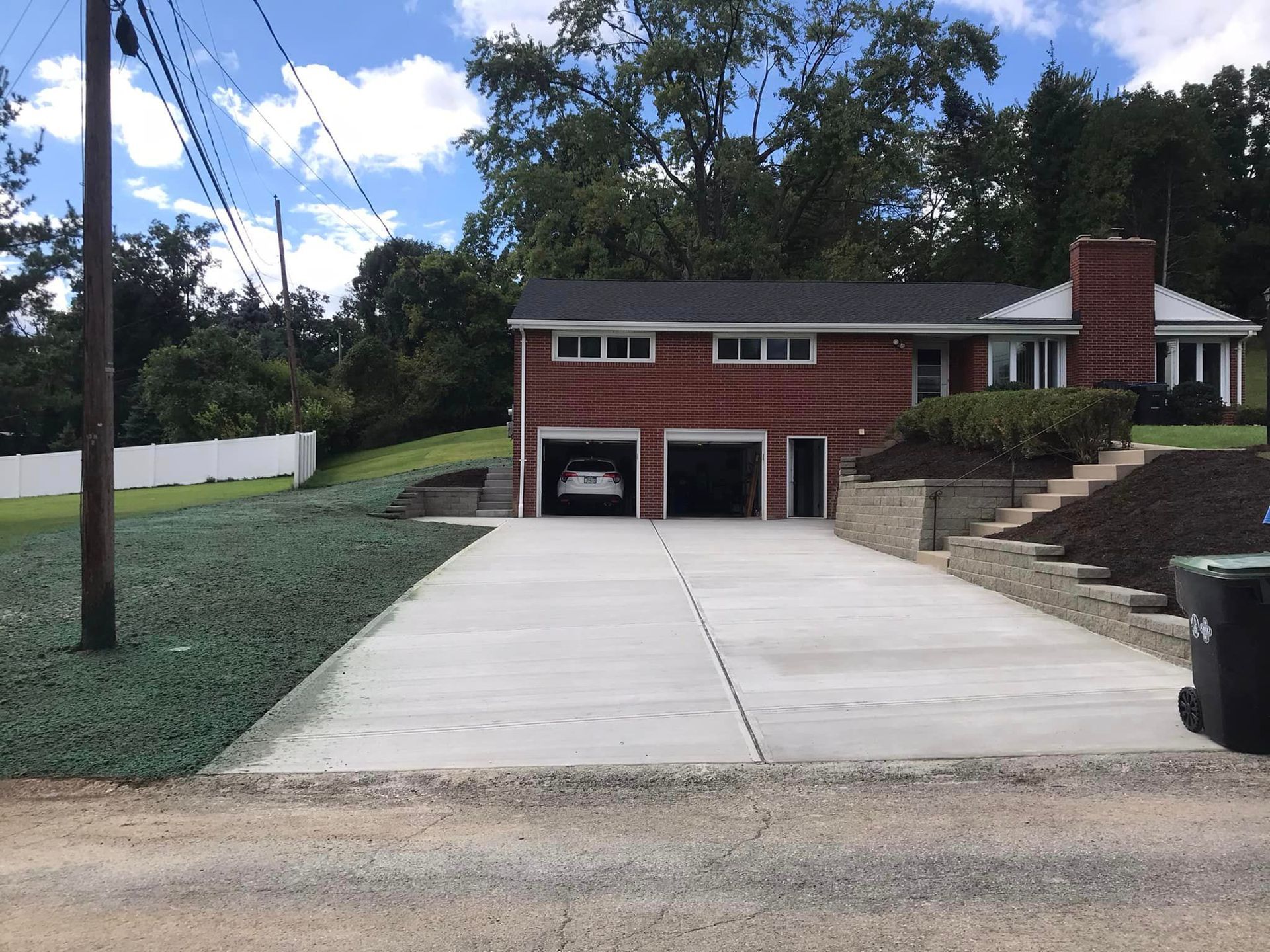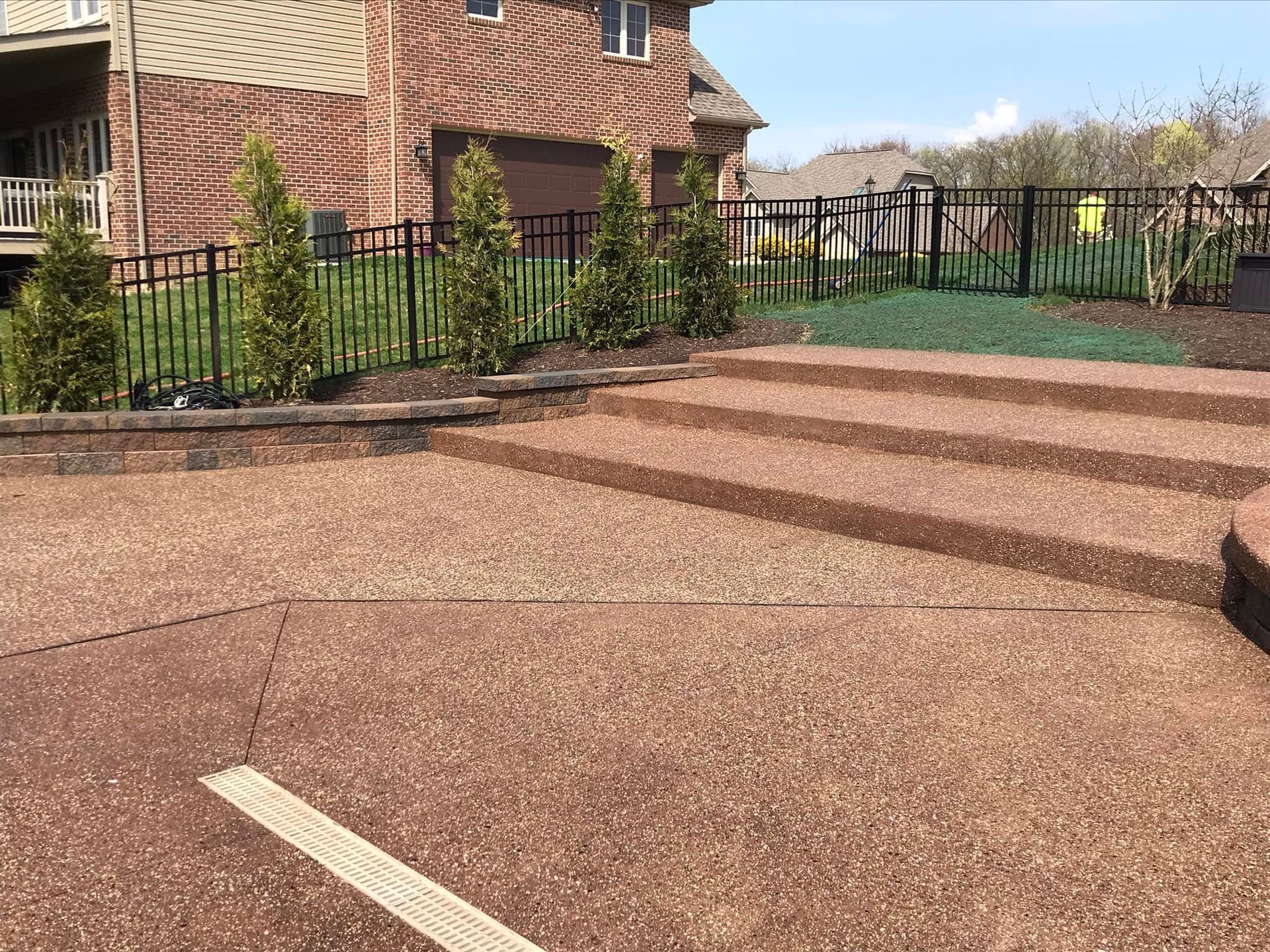
McCluskey Contracting Concrete Blog
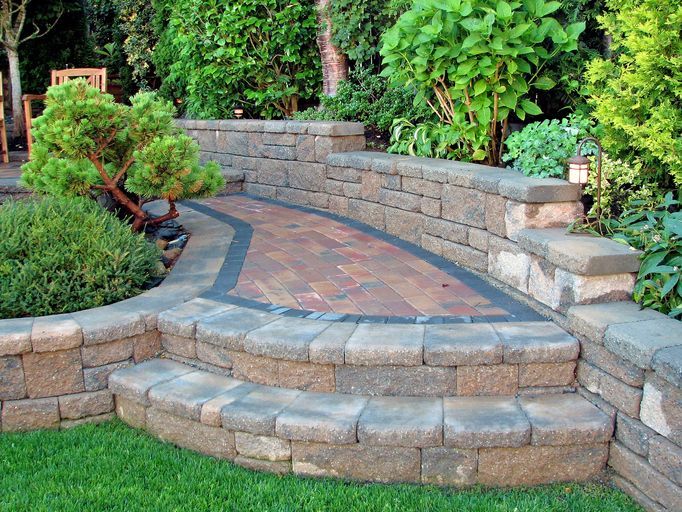
Retaining walls are more than just functional structures; they can add beauty, value, and practicality to your property. At McCluskey Contracting, your trusted residential and commercial contractor serving the Pittsburgh area, we combine years of experience and a focus on quality to create retaining walls that enhance your home. Whether you’re looking to expand parking space or transform a sloped yard into a functional landscape, we’ve got you covered. Benefits of Retaining Walls for Outdoor Spaces Retaining walls offer a range of benefits for homeowners in Pittsburgh. They can: Prevent soil erosion and manage drainage effectively. Turn unusable sloped areas into flat, functional spaces for patios, gardens, or recreation. Add visual appeal and structure to your landscaping design. Increase the overall value of your property by enhancing curb appeal and functionality. With the right design, retaining walls can blend seamlessly with your home’s aesthetic while offering long-lasting durability. Expanding Parking Space with Retaining Walls In Pittsburgh’s hilly terrain, parking can be a challenge. Retaining walls provide an excellent solution for creating additional parking areas. By leveling a portion of your yard, you can expand your driveway or add space for guests’ vehicles. Retaining walls for parking areas are built to withstand heavy loads and are designed with proper drainage systems to ensure long-term stability. This practical application not only improves accessibility but also boosts the functionality of your property. Creative Design Ideas for Retaining Walls Gone are the days when retaining walls were purely utilitarian. Modern designs offer countless ways to enhance your outdoor space creatively: Tiered Walls: Add depth and dimension by incorporating tiered retaining walls with built-in planters for flowers, shrubs, or even a vegetable garden. Natural Stone: Use natural stone materials for a timeless and elegant look that complements the local landscape. Integrated Seating: Design retaining walls with built-in benches or seating areas for an inviting outdoor space. Lighting Features: Add LED lighting to highlight the wall’s design and improve safety and ambiance during nighttime. Whether you prefer sleek modern designs or rustic charm, the possibilities are endless. Choosing the Right Contractor in Pittsburgh When it comes to building retaining walls, choosing the right contractor is essential. At McCluskey Contracting, we bring decades of experience and a commitment to quality to every project. We understand Pittsburgh’s unique terrain and climate, ensuring that your retaining wall is both functional and built to last. Our team works closely with you to design and construct a solution that meets your needs and complements your home. Request a Free Quote Today Ready to maximize your outdoor space with a custom retaining wall? Contact McCluskey Contracting today to request your free quote. Whether you’re looking to expand parking space or transform your yard, we’re here to bring your vision to life. Call us or visit our website to get started!

When it comes to choosing the right material for your driveway, homeowners in Pittsburgh have two primary options: concrete and asphalt. While both materials have their advantages, concrete driveways stand out as the superior choice for long-term durability, low maintenance, and enhanced curb appeal. At McCluskey Contracting, we specialize in high-quality concrete driveways. With over 15 years of experience, we are here to help you make the best decision for your home. Below, we'll explore why concrete is the best option for Pittsburgh homeowners. Material Durability and Longevity Concrete driveways offer exceptional durability and a long lifespan. Unlike asphalt, which is more susceptible to cracking and deterioration over time, concrete can withstand heavy loads and frequent traffic without significant wear and tear. When properly installed and maintained regularly, a concrete driveway can last 30 years or more, significantly outlasting asphalt alternatives. Additionally, concrete resists damage from oil spills and vehicle fluids, which can cause asphalt to break down over time. Another major factor in durability is structural integrity. Concrete's rigid composition ensures a stable surface that remains level over time. Unlike asphalt, which softens in extreme heat and can develop depressions from parked vehicles, concrete maintains its shape under all conditions. This means a consistently smooth surface that enhances both functionality and curb appeal. Maintenance Requirements One of the most significant advantages of concrete driveways is their low maintenance requirements. Unlike asphalt, which requires regular sealing and resurfacing to maintain its integrity, concrete driveways don't need much upkeep. Regular cleaning and sealing every few years give you a driveway that looks pristine while preventing cracks and discoloration. This means less hassle and fewer long-term maintenance costs for homeowners. Additionally, concrete is more resistant to damage from de-icing chemicals commonly used in Pittsburgh's harsh winters. While asphalt surfaces can become brittle and crack due to salt and freeze-thaw cycles, concrete's durability makes it more resistant to these conditions. Homeowners can further extend the life of their driveway with periodic sealing and proper drainage management. Cost Considerations While the initial installation cost of concrete may be slightly higher than asphalt, the long-term savings make it a more cost-effective investment. Asphalt driveways typically require frequent repairs and resealing, which add up over time. Concrete driveways, on the other hand, provide a better return on investment due to their longevity and reduced maintenance needs. Choosing concrete means fewer repair expenses and a driveway that maintains its aesthetic appeal for decades. Additionally, homeowners should consider the value added to their property. A well-maintained concrete driveway boosts curb appeal and can increase a home's resale value. Potential homebuyers are more interested in a durable, low-maintenance surface rather than one that may require frequent repairs. Weather Resistance Pittsburgh's climate brings harsh winters with freeze-thaw cycles that can damage driveways. Concrete is durable against extreme weather conditions, reducing the likelihood of potholes and cracks that commonly form in asphalt driveways. Additionally, concrete's light color helps reflect sunlight, preventing excessive heat absorption in the summer and reducing the risk of softening or deformation, which is common with asphalt surfaces. Another weather-related benefit of concrete is its ability to drain water effectively. With proper installation and finishing, concrete driveways can be designed to minimize water pooling and runoff, which helps prevent erosion and structural damage. In contrast, asphalt surfaces are more prone to developing ruts and depressions that can trap water, leading to further deterioration over time. Why Choose McCluskey Contracting At McCluskey Contracting, we take pride in delivering top-quality concrete driveways tailored to the needs of Pittsburgh homeowners. Here's why we stand out: 15+ Years of Experience: With over a decade and a half in the industry, we have the expertise to ensure your concrete driveway is installed to the highest standards. Licensed and Insured: We are a fully licensed and insured contractor, giving homeowners peace of mind knowing they are working with professionals. Free Quotes and Transparent Pricing: We offer free consultations and competitive pricing with no hidden fees, so you know exactly what to expect. Customer Satisfaction Guarantee: Our experienced team is dedicated to providing excellent customer service, and we stand by our work with a satisfaction guarantee. Customization Options: We offer a variety of textures, finishes, and colors to complement your home's style and enhance curb appeal. Get a Free Quote from McCluskey Contracting If you're considering a new driveway, McCluskey Contracting is here to help. With over 15 years of experience, we are fully licensed and insured, ensuring top-quality workmanship on every project. Contact us today to learn more about the benefits of concrete driveways and how we can enhance your home's curb appeal. Fill out our online form for a free quote today!
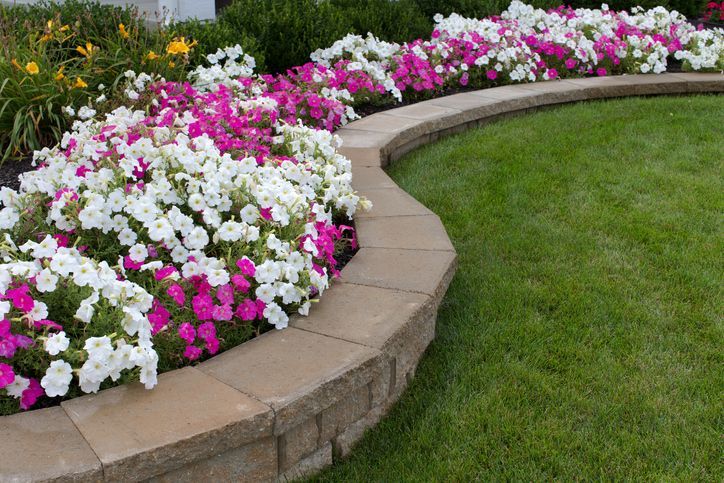
For homeowners with steep slopes in their backyards, landscaping can seem impossible. These challenging landscapes often present issues such as erosion, poor drainage, and limited usable space. However, there's a solution that's both practical and aesthetically pleasing—retaining walls. Retaining walls are more than a necessity; they can transform your sloping yard into a beautiful, usable space. Besides offering support to prevent erosion, they create terraces and flat areas that maximize the utility of your outdoor space. In this guide, we'll explore the essential aspects of retaining wall solutions for steep slopes, from understanding their function to the best design and material choices. Understanding Retaining Walls What are Retaining Walls? At their core, retaining walls are structures designed to hold or retain soil behind them. They are critical in landscapes where slopes and inclines can cause soil movement and erosion. A retaining wall holding back the earth creates a level area that homeowners can use for gardens, patios, or play spaces. These walls are engineered to withstand the pressure the retained soil exerts, often incorporating drainage solutions to manage water flow. This makes them essential for preventing landslides and soil erosion in sloped areas. Understanding how retaining walls work is crucial for making informed decisions about your landscape design. Types of Retaining Walls Several types of retaining walls are suitable for different scenarios and challenges presented by steep slopes. Gravity walls work by relying on their own mass to resist pressure from behind and are often built with heavy materials like stone or concrete. Cantilevered walls use a reinforced slab to transfer pressure to the base, allowing for taller constructions without needing excessive bulk. Anchored walls provide additional support through cables or other stays anchored into the ground behind the wall. Each type of retaining wall offers distinct advantages depending on the landscape's specific requirements. When selecting a retaining wall design, homeowners should consider factors like the height of the slope, soil type, and drainage needs. Design Considerations Critical Factors in Retaining Wall Design Several critical factors must be considered when designing a retaining wall for a challenging landscape. The wall's height will significantly impact its design, as taller walls require more substantial construction to withstand the increased pressure from the retained soil. Additionally, the slope's angle and soil type are crucial in determining the wall's stability and the need for drainage solutions. Incorporating proper drainage is essential to prevent water buildup behind the wall, which can weaken the structure over time. Using gravel or installing weep holes can help manage water flow, reducing the risk of damage or collapse. These considerations are vital for creating a safe and effective retaining wall solution. Balancing Functionality and Aesthetics While functionality is the primary concern when designing a retaining wall, aesthetics should not be overlooked. Your retaining wall can enhance your landscape's beauty while serving its practical purpose. Consider using materials that complement your home's architecture and the natural surroundings, such as natural stone for a more rustic look or sleek concrete for a modern touch. Incorporating planting beds into the design can add color and life to the wall, creating a seamless transition between your yard's structural and natural elements. Terracing your slope with multiple walls at different levels can also add visual interest and break up the monotony of a single large wall. Materials and Construction Choosing the Right Materials Selecting the proper materials for your retaining wall is crucial for its durability and appearance. Some popular materials include natural stone, which offers a timeless look and excellent durability, and concrete blocks, known for their versatility and strength. Timber can also be used for a more organic aesthetic, though it may require additional treatment to ensure longevity. Consider your local climate and environmental conditions when choosing materials. For example, areas with high moisture levels may require materials resistant to water damage, such as concrete or stone. Selecting suitable materials will ensure your retaining wall withstands the test of time and remains an attractive feature in your landscape. Best Practices for Construction Constructing a retaining wall requires careful planning and execution to ensure stability and longevity. Begin by excavating the slope to create a level foundation, which is crucial for the wall's structural integrity. Using crushed stone or gravel as a base layer promotes drainage and prevents water accumulation at the wall's foot. Building the wall in layers or courses can enhance stability, while staggered joints help distribute pressure evenly across the structure. Reinforcing the wall with geogrid or steel bars adds strength, particularly for taller walls or those retaining significant amounts of soil. Working with a professional contractor, such as McCluskey Contracting, can make a difference. Expert builders ensure the wall is constructed correctly and safely and adheres to local building codes and regulations. Attempting a DIY project without the necessary experience can lead to expensive mistakes and potential hazards, underscoring the value of professional assistance. Call McCluskey Contracting Today for All Your Retaining Wall Needs Retaining walls are a brilliant solution to the challenges of steep slopes and difficult landscapes. They provide essential support against erosion, create functional spaces, and can even elevate the aesthetic appeal of your outdoor area. If you're ready to transform your landscape with a retaining wall, contact McCluskey Contracting for expert guidance and installation. They can help maximize your outdoor space's potential while ensuring safety and durability. Don't wait any longer—your dream landscape is just a wall away!

Retaining walls are essential structures that help prevent soil erosion and keep landscapes in place. Whether you're building a retaining wall for aesthetic purposes or functional reasons, it's essential to understand the process involved. In this article, we'll discuss what to expect when working with a professional to build a retaining wall. Step 1: Site Assessment The first step in constructing your retaining wall is to assess the site where it will be constructed. This involves evaluating the soil type, drainage patterns, and potential load-bearing requirements. A professional contractor will also consider existing structures or utilities near the construction site. The assessment is crucial in determining the appropriate design and materials for the project. Step 2: Design and Planning Once the site assessment is complete, your contractor will work with you to create a wall design that fits your specific needs and budget. Retaining walls can vary in size, shape, and material, so it's essential to clearly understand what you want before moving forward with construction. Your contractor may also obtain necessary permits from local authorities during this stage. When designing a retaining wall, several factors must be considered, such as the desired height and slope. These factors will determine the required width and reinforcement needed to ensure the structure's stability and safety. Additionally, drainage is a crucial element in retaining wall design. Proper drainage prevents water from building up behind the wall, which can cause pressure and, in turn, damage over time. Your contractor may include drainage systems such as weep holes or gravel-filled trenches to redirect water away from the wall. Step 3: Materials Retaining walls can be constructed using a variety of materials, including concrete blocks , natural stone, brick, wood, or recycled materials. Each material has its own unique characteristics and aesthetic appeal. Your contractor will help you choose the best option based on your design preferences, budget, and the specific needs of your project. Concrete blocks are popular for retaining walls due to their durability and affordability. They come in various sizes, shapes, and colors, making it easy to customize your wall's look. Natural stone is another great wall material option, as it adds a timeless beauty to any landscape. However, natural stone can be more costly than other materials and requires skilled labor for installation. Step 4: Construction Process Now that we've determined your retaining wall's design, location, and materials, it's time to start the construction process . The first step is to excavate the area where the retaining wall will be built. This involves removing excess soil and preparing a level base for the wall. Next, we will lay down a layer of gravel or crushed stone on the excavated area. This will act as a stable foundation for your wall and help with drainage. How thick this layer needs to be will depend on the length and height of the retaining wall. We recommend adding a drainage system behind the retaining wall to redirect any excess water away from your property. This could include installing perforated pipes or creating a slope on the backside of the wall to allow water to naturally drain away. After the base is prepared, it's time to start building the actual wall. We start by laying out the first row of blocks or stones, using a carpenter's level to ensure they are level and straight. We continue building up the wall, staggering each row so that joints are not aligned. This adds stability to the structure and creates an aesthetically pleasing design. Using a rubber mallet, we tap each block or stone into place, making sure they are snug and secure. As we build the wall, we backfill behind it with gravel or crushed stone. This helps to reinforce the structure and prevent soil erosion. It's essential to compact this backfill periodically using a tamper tool to ensure stability. Once the desired height is reached, we cap off the top of the retaining wall with either capstones or coping stones for a finished look. Work With McCluskey Contracting for Retaining Wall Installation Remember, retaining walls are functional and can add aesthetic appeal to your outdoor space. With proper retaining wall construction and maintenance, they can last for many years. So, the next time you have a sloped area on your property, consider installing a retaining wall. And when you do, trust the experts at McCluskey Contracting to get the job done right. Contact us today to schedule a consultation and plan your new retaining wall.
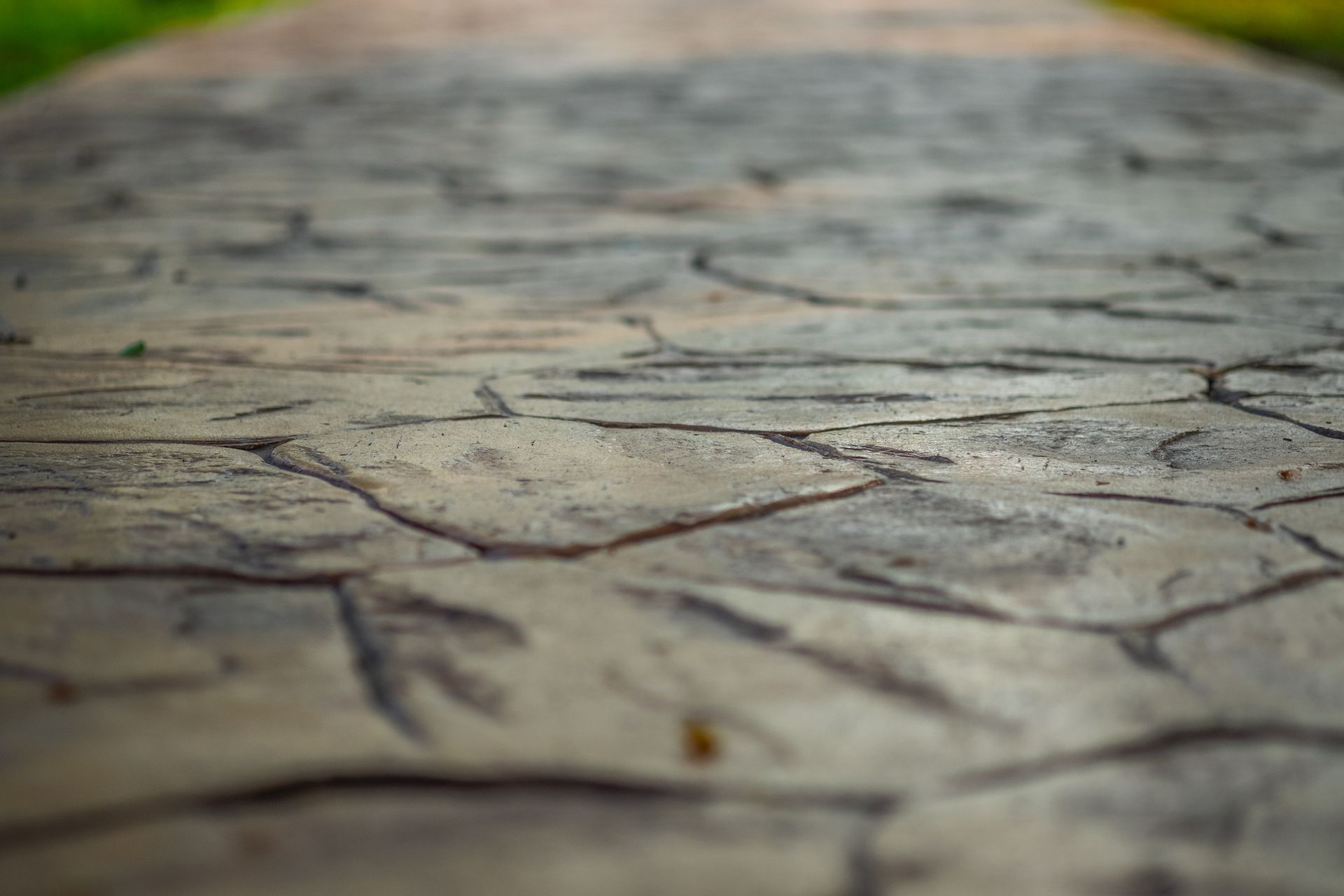
tamped concrete has revolutionized the way we think about outdoor and indoor flooring. Offering the elegance and durability of high-end materials without the hefty price tag, stamped concrete is a versatile option that can mimic the look of brick, stone, wood, and more. At McCluskey Contracting in Pittsburgh, PA, we’ve seen firsthand how these designs can transform spaces. Here are the five most popular stamped concrete designs that can add beauty and value to your home. 1. Ashlar Slate The Look: Ashlar slate stamped concrete replicates the classic, sophisticated appearance of cut stone. This design features a pattern of rectangular or square stones laid in a semi-irregular arrangement, giving it a timeless and elegant look. Why It's Popular: Ashlar slate is versatile, complementing both traditional and contemporary homes. Its clean lines and varied stone sizes provide a balanced and natural aesthetic, making it ideal for patios, walkways, and driveways. Where to Use It: Patios Driveways Walkways Pool decks 2. Cobblestone The Look: Cobblestone stamped concrete brings the charming, rustic feel of old European streets to your home. The pattern consists of rounded stones arranged in a repeating pattern, creating a sense of history and texture. Why It's Popular: Homeowners love cobblestone for its classic appeal and the touch of old-world charm it brings. It's particularly popular for driveways and pathways, where it can create a welcoming, quaint atmosphere. Where to Use It: Driveways Garden paths Entryways Courtyards 3. Wood Plank The Look: Wood plank stamped concrete mimics the warm, inviting look of natural wood flooring. The pattern can be customized to replicate various wood grains and plank sizes, offering a realistic wood appearance without the maintenance issues. Why It's Popular: This design is perfect for those who love the look of wood but need the durability and low maintenance of concrete. It’s especially popular in areas where real wood would be impractical, such as pool decks and patios. Where to Use It: Patios Pool decks Interior floors Walkways 4. Flagstone The Look: Flagstone stamped concrete replicates the irregular shapes and natural texture of real flagstone. This design creates a rustic, natural look that blends seamlessly with outdoor landscapes. Why It's Popular: Flagstone is a favorite for creating organic, natural-looking patios and pathways. It provides a rugged yet refined look, making it perfect for garden areas and outdoor living spaces. Where to Use It: Patios Walkways Garden paths Outdoor kitchens 5. Brick The Look: Brick stamped concrete imitates the classic look of brick paving. The pattern can vary from traditional running bond to herringbone, basket weave, and more, offering a wide range of design options. Why It's Popular: Brick is timeless and versatile, suiting a variety of architectural styles. It's durable and easy to maintain, making it a popular choice for walkways, driveways, and patios. Where to Use It: Driveways Walkways Patios Courtyards Why Choose Stamped Concrete? Stamped concrete offers numerous benefits over traditional materials: Cost-Effective: Achieve the high-end look of stone, brick, or wood without the high cost. Durable: Concrete is strong and long-lasting, able to withstand the elements and heavy foot traffic. Low Maintenance: Unlike real wood or stone, stamped concrete requires minimal upkeep. Customizable: With a wide range of patterns and colors, you can create a look that perfectly complements your home’s style. At McCluskey Contracting, we specialize in bringing your vision to life with expertly installed stamped concrete . Whether you're looking to upgrade your patio, driveway, or interior floors, our team in Pittsburgh, PA, is here to help you choose the perfect design for your home. Contact us today to learn more about how stamped concrete can enhance your living spaces.
